One of the enduring images of the Serengeti is the Great
Migration, which is the continuous circling, mostly clockwise, around within
the park (including into Kenya) by vast herds of
an antelope family member
called wildebeest. Literally over a
million of them rotate through the park following the rains and resulting grass
growth. Zebras move along the same
route, but not in such overwhelming numbers.
People usually time their visits to the Serengeti to see one part or
another of the migration, including for some the famous (or infamous) crossing
by adults and young calves of a river filled with crocodiles while other
predators like lions wait on the banks.
It is utter mayhem. We did not
choose that timing -- we hoped instead to see the calving which occurs this
time
of year. The mayhem happens later,
which cuts into Alaska early summer, and Phyllis was not sure she could stomach
that kind of scene anyway.
Our guides Ronald, Samson and Joseph, had been thinking
hard, trying to figure out where the best chance to catch up with the
wildebeest herds would be. While
sighting the Big 5 is important, they considered it their main job to find this
most iconic sight for us, and it’s not
as easy as one would think. The Serengeti is vast and there’s no aerial
surveillance or other way to easily track the animals. On this day, Joseph had a hunch, based in
part on the rains we had encountered the day before, which turned out to be
right, and after navigating through scrub-land full of pesky tsetse flies, we
came upon small groups of wildebeest moving steadily onward. Moving on we came to a small rock outcropping
(kopje) where there were five or six lions hanging out, looking down on us as
we drove up pretty darn close. Most of
the group stayed here for a while to watch them, but Joseph, our driver for the
day, had a mission – the migration.
We circled the rock once and then left to go over a small
rise and out onto a wide savannah filled (literally) with tens of thousands of
wildebeest. They parted without fear as
we drove through, although some were rather skittish, and once we stopped, they
formed a perfect
circle leaving us in the clear. Our jeep had the whole group to ourselves for
almost a half hour before the others drove up.
We decided a nearby group of trees was the perfect place for a picnic. We unpacked a table and set up the moveable
feast the staff back at camp had provided, and enjoyed a nice breeze with the
bleating of wildebeest all around us.
The sound they make is somewhere between a cow’s mooing and a donkey’s
braying. There were some newborn
calves
among them, making it all the more perfect.
They stretched to the horizon in every direction. It was amazing.
On the way to the wildebeest territory, we had seen a number
of lions and giraffes (plus those clueless guineafowl again on the track), and
a few new animals such as hartebeest and the intriguing secretary bird (stories
differ as to the reason for the name, but most seem to think it looks like that
now-extinct human species, the secretary, with pencil behind the ear
ready to
take dictation). There were moderately
large herds of zebra in the same area as wildebeest, and we learned that they
also migrate in a similar manner. In
fact, they collaborate, because zebras have keen eyesight and wildebeest have a
keen sense of smell, so together they manage to protect themselves and their
young against most predators. Most of
the other animals (including the predators like lions and leopards) stay put in
their own territory while these key prey species move through.
After lunch, we soldiered back toward tsetse fly territory (in
the middle of which the park inexplicably has a ranger station) and were happy to
see three elands and a terrified cape
rabbit that was frozen in the shade of a
bush as we three jeeps surrounded him. Elands
seem to be among the shyest of the animals of the Serengeti and we were only
able to see these at a distance. The
last new find of the day was another amazing bird, the gray crested crown
crane, the national bird of Uganda. The
flamboyant plumage of many of these birds is just incredible.

 Serengeti National Park, Tanzania
Serengeti National Park, Tanzania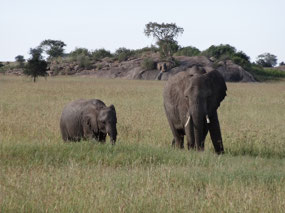
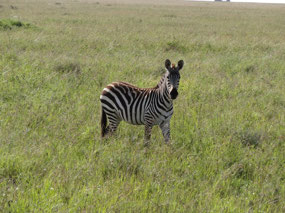
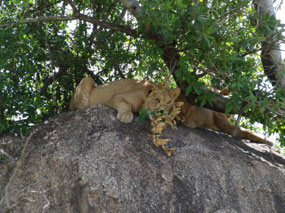
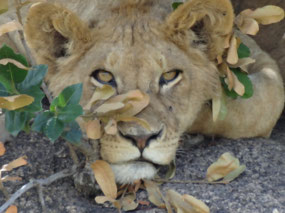
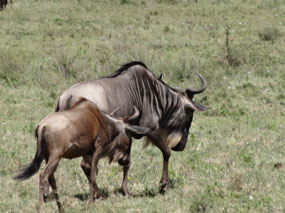
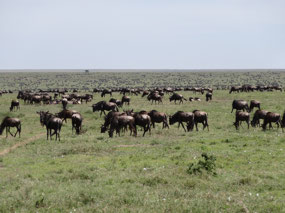
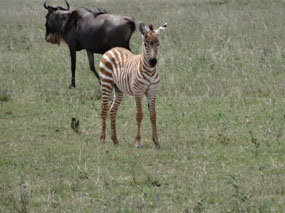
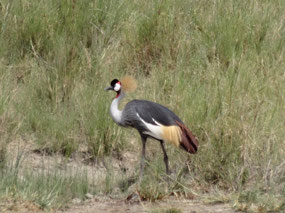




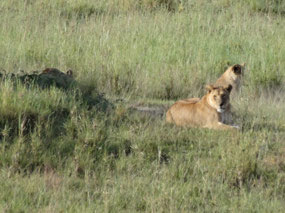
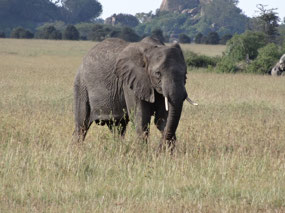
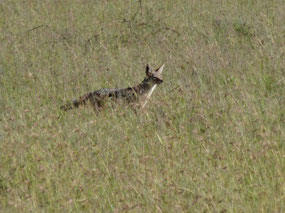
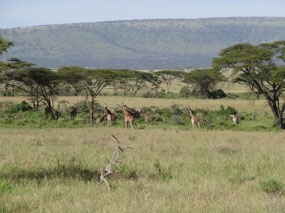
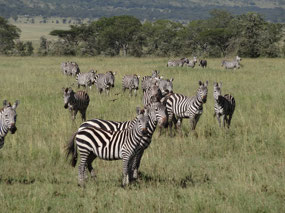
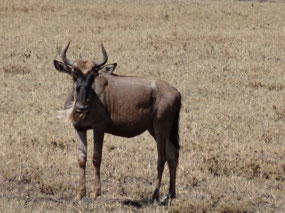
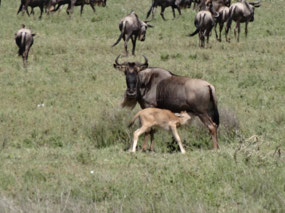
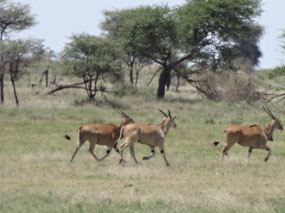
2025-05-23